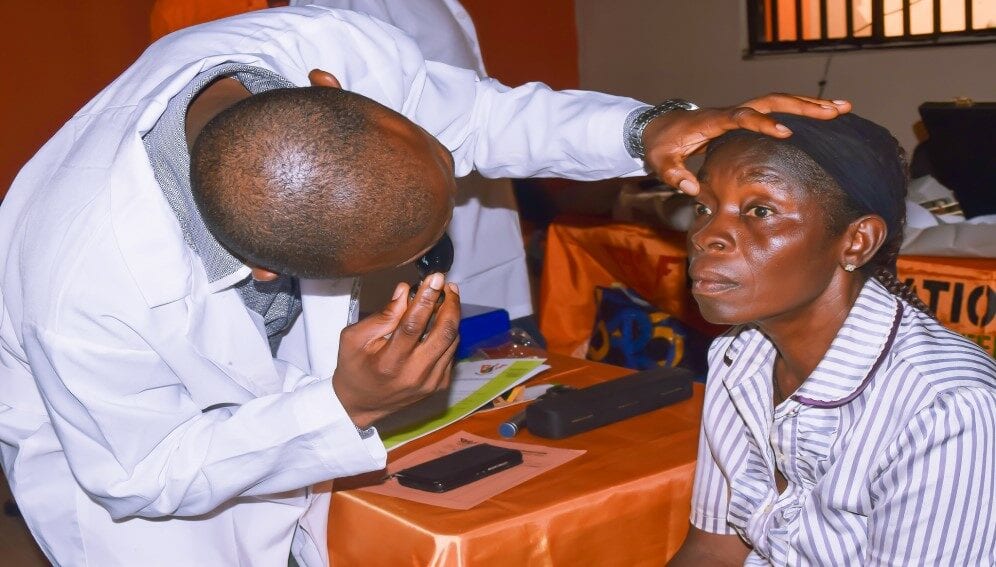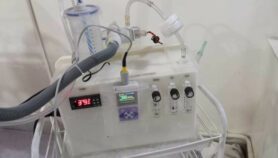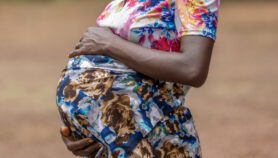05/05/21
Gambia’s trachoma-free status ‘sets example for Africa’

By: Vera Ouma
Send to a friend
The details you provide on this page will not be used to send unsolicited email, and will not be sold to a 3rd party. See privacy policy.
[NAIROBI] Gambia has eliminated trachoma as a public health problem, offering hope to other African countries trying to eradicate the painful eye disease.
According to the World Health Organization (WHO), trachoma is endemic in 45 countries globally including 29 in Africa such as the Democratic Republic of Congo, Ethiopia, Kenya, Mali, Nigeria, Uganda and Tanzania. It is the world’s leading infectious cause of blindness.
“We have shown to other countries in Sub-Saharan Africa that elimination is possible.”
Balla Musa Joof, Sightsavers
The WHO’s validation of Gambia as trachoma-free in April makes it the second African country to achieve this goal after Ghana eliminated the neglected tropical disease (NTD) in 2018.
“The elimination of trachoma in Gambia is a huge achievement. After decades of hard work, our children can grow up without fear of this disease, and our government can direct resources toward tackling other health issues,” says Balla Musa Joof, country director for Gambia and Guinea-Bissau for Sightsavers, a non-profit organisation involved in fighting the disease.

“We have shown to other countries in Sub-Saharan Africa that elimination is possible. It’s a huge task, but with collaboration and partnership, it can be done.”
Sarjo Kanyi, national eye health programme manager at the Gambia Ministry of Health and Social Welfare, tells SciDev.Net that the success resulted from three decades of hard work and partnerships with local communities and institutions such as Sightsavers, UNICEF, the International Trachoma Initiative and pharmaceutical company Pfizer.



The disease, which thrives in areas where there are water shortages, poor sanitation and infestations of flies, spreads through contact with infected flies, infected hands, clothes or bedding. It is caused by a bacterium called Chlamydia trachomatis.
Kanyi explains that those who contract the disease undergo surgery to stop the eyelashes from rubbing against the eyeball to halt the cycle of repeated infection that can lead to blindness. Infected people are also given antibiotics to treat the trachoma infection and reduce the spread of the disease.



“The treatment is often distributed at mass drug administrations, often by community volunteers, and is usually repeated annually for three years or more,” Kanyi says.
Trachoma can be easily treated but causes scarring to the eyelid that pulls the eyelashes inward, causing them to scrape against the eye with every blink, if treatment is delayed.
According to Kanyi, although the initial stage of the disease can easily be treated, the advanced form is problematic.
“This advanced form of trachoma is called trichiasis, and the pain can be so intense that many people resort to pulling out their eyelashes to reduce the agony of blinking,” Kanyi explains. “Over time, if it is not treated, trichiasis can lead to blindness.”
Gambia’s achievement follows the endorsement of a road map that aims to eliminate at least one NTD in 100 countries by 2030, agreed during the 73rd World Health Assembly held virtually in November 2020.
Sultani Matendechero, head of the NTD unit at Kenya’s Ministry of Health, hails Gambia’s achievement.
“The Gambian success is a big encouragement on our goal to eliminate trachoma and other NTDs in Sub-Saharan Africa,” he says. “We are pursuing a goal and if we emulate Gambia we can achieve elimination.”



He adds that the disease stops people from going to work and children from attending schools, but treating it is a challenge for endemic countries because of inadequate funding.
This piece was produced by SciDev.Net’s Sub-Saharan Africa English desk.













